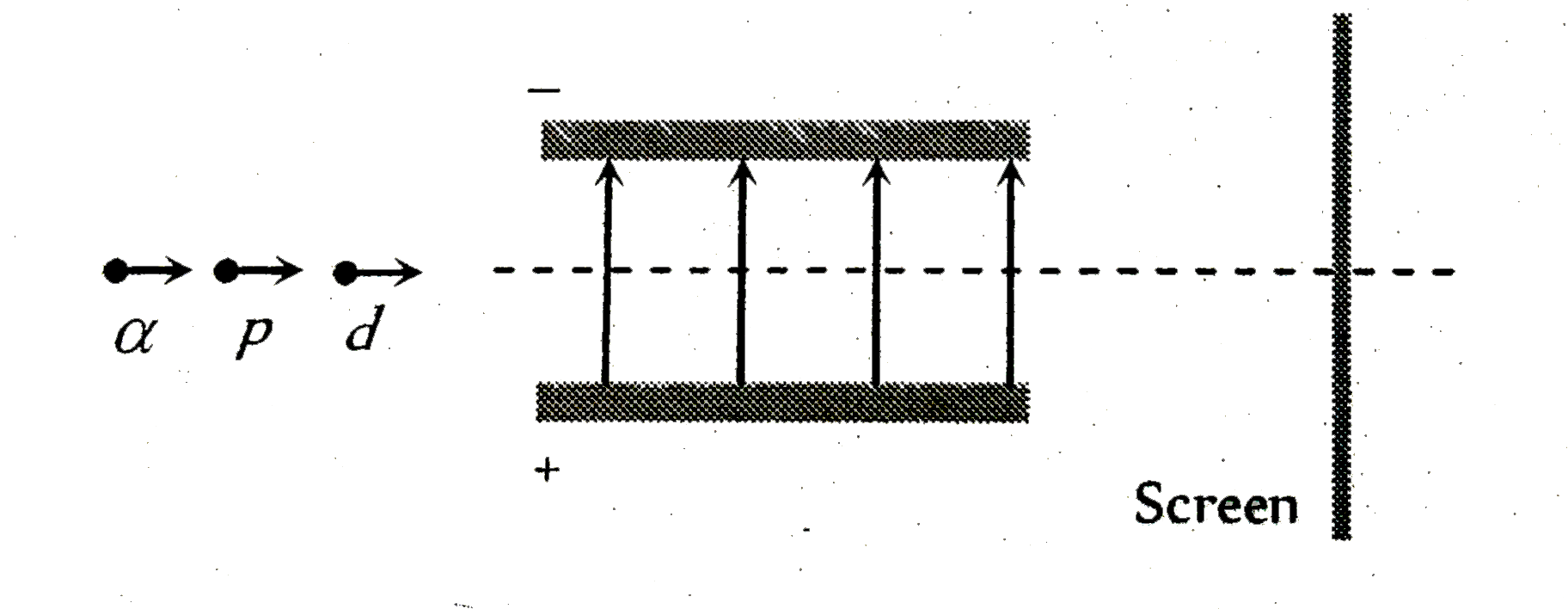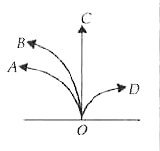A proton, a deutron and an α-particle having the same momentum, enters a region of uniform electric field between the parallel plates of a capacitor. The electric field is perpendicular to the initial path of the particles. Then the ratio of deflections suffered by them is

1:2:8
1:2:4
1:1:2
None of these
The correct Answer is:A
Step by step video, text & image solution for A proton, a deutron and an alpha-particle having the same momentum, enters a region of uniform electric field between the parallel plates of a capacitor. The electric field is perpendicular to the initial path of the particles. Then the ratio of deflections suffered by them is by Physics experts to help you in doubts & scoring excellent marks in Class 12 exams.
Updated on:21/07/2023Topper's Solved these Questions
- ELECTRON, PHOTON, PHOTOELECTRIC EFFECT AND X-RAYSBOOK - ERRORLESS CHAPTER - ELECTRON, PHOTON, PHOTOELECTRIC EFFECT AND X-RAYSEXERCISE - Cathode Rays and Positive Rays
11 Videos
- ELECTRON, PHOTON, PHOTOELECTRIC EFFECT AND X-RAYSBOOK - ERRORLESS CHAPTER - ELECTRON, PHOTON, PHOTOELECTRIC EFFECT AND X-RAYSEXERCISE - Photon and Photoelectric Effect
4 Videos
- ELECTRO MAGNETIC INDUCTIONBOOK - ERRORLESS CHAPTER - ELECTRO MAGNETIC INDUCTIONEXERCISE - SET
20 Videos
- ELECTRONICSBOOK - ERRORLESS CHAPTER - ELECTRONICSEXERCISE - Selv Evaluation Test
23 Videos
Similar Questions
A proton, a deutron and an alpha particle, after being accelerated through the same potential difference enter a region of uniform magnetic field →B, in a direction perpendicular to →B. Find the ratio of their kinetic energies. If the radius of proton's circular path is 7cm, what will be the radii of the paths of deutron and alpha particle?
View SolutionA proton, deutron and α particle are moving with same momentum in uniform magnetic field. The ratio of magnetic forces acting on them is___and their speed are in ratio____
View Solution
Knowledge Check
The electric field (→E) between two parallel plates of a capacitor will be uniform if.
Athe plate separation (d) is equal to area of the plate (A)Bthe plate separation (d) greater when compared to area of the plate (A)Cthe plate separation (d) is less when compared to area of the plate (A)D2 (or) 3A proton, a deuteron and an α-particle with the same KE enter a region of uniform magnetic field, moving at right angles to B. What is the ratio of the radii of their circular paths ?
A1:√2:1B1:√2:√2C√2:1:1D√2:√2:1A proton, a deuteron and an α-particle with the same KE enter a region of uniform magnetic field, moving at right angles to B. What is the ratio of the radii of their circular paths ?
A1:√2:1B1:√2:√2C√2:1:1D√2:√2:1
A proton, a deutron and α-particle, whose kinetic energies are same, enter perpendicularly a uniform magnetic field. Compare the radii of their circualr paths.
View SolutionA proton, a deuteron and an α-particle with the same KE enter a region of uniform magnetic field, moving at right angles to B. What is the ratio of the radii of their circular paths ?
View SolutionA proton, a deutron and an α- particle accelerated through the same potential difference enter a region of uniform magnetic field, moving at right angles to it. What is the ratio of their kinetic energy?
View SolutionA neutron, a proton, an electron and an α- particle enter a region of uniform magnetic field with the same velocities. The magnetic field is perpendicular and directed into the plane of the paper. The tracks of the particles are labelled in the figure. The electron follows the track

View SolutionA proton, deutron and α particle are moving with same momentum in uniform magnetic field. The ratio of magnetic forces acting on them is___and their speed are in ratio____
View Solution
